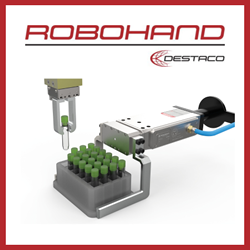Carnegie Mellon's Metin Sitti Develops System for Replicating How Geckos Keep Webbed Feet Sticky and Clean
CMU Researchers Say Synthetic Gecko-Adhesive Has Implications in Variety of Industries
PITTSBURGH, Feb. 19, 2014 -- Geckos are wizards at sticking to any kind of hard surface repeatedly. And they also are very adept at keeping their sticky adhesive feet clean even while running through dirt-infested jungles and deserts. So what's their secret?
Carnegie Mellon University's Metin Sitti and his research team have discovered that the gecko remains clean in dirty environments by shedding contaminants with each step. Sitti's team consists of CMU's Yigit Menguc and Uyiosa Abusomwan, and Hendrik Hoefscher and Michael Rohrig of Karlsruhe Institute of Technology in Germany.
In a paper to appear Feb. 19 in the Interface Journal of the British Royal Society, Sitti and his team successfully emulated the contact self-cleaning ability of geckos in nature.
"We performed contact self-cleaning experiments with three different sizes of mushroom-shaped elastomer microfibers and five different sizes of spherical silica contaminants. Using a load-drag-unload dry contact cleaning process similar to the loads acting on the gecko foot during climbing, our fully-contaminated synthetic gecko-adhesive could recover lost stickiness and lost adhesion at a rate comparable with that of the gecko," said Sitti, head of CMU's NanoRobotics Lab and a professor of mechanical engineering.
Sitti, who was recently inducted as a fellow of the Institute of Electrical and Electronics Engineers (IEEE), reports that the relative size and scale - the ratio of the average contaminant particle diameter to the fiber tip diameter - determine the mechanism and cleaning performance of the sticky adhesive. His team found that contaminant particle rolling and particle embedding among fiber spacing during the drag process were the main mechanisms of contact self-cleaning.
"Our work has implications for use of this synthetic gecko-adhesive in a variety of industry sectors including, defense, consumer products, sports, automotive, medicine, aerospace and robotics applications," Sitti said.
This research has been funded by the Civil, Mechanical and Manufacturing Innovation Division of the National Science Foundation.
Sitti also is using his work with geckos to inspire new methods to print electronics on complex surfaces. Along with researchers, Sitti developed a reversible adhesion method for printing electronics on a swath of complex surfaces such as clothing, plastic and leather. His team designed a square polymer stamp with pyramid micro-tips that allows them to control adhesion strength.
"We are very close to commercializing the gecko-inspired synthetic adhesives for use in many industry sectors," said Sitti, also founder and president of nanoGriptech, Inc., a 2009 CMU spinoff company.
About Carnegie Mellon University: Carnegie Mellon (www.cmu.edu) is a private, internationally ranked research university with programs in areas ranging from science, technology and business, to public policy, the humanities and the arts. More than 12,000 students in the university's seven schools and colleges benefit from a small student-to-faculty ratio and an education characterized by its focus on creating and implementing solutions for real problems, interdisciplinary collaboration and innovation. A global university, Carnegie Mellon's main campus in the United States is in Pittsburgh, Pa. It has campuses in California's Silicon Valley and Qatar, and programs in Africa, Asia, Australia, Europe and Mexico.
Featured Product

DESTACO - Revolutionizing Industrial Automation
Looking for a reliable solution to enhance your automation process? Look no further than the DESTACO Robohand Grippers. These grippers are designed for the modern world of robotics, offering unparalleled performance and precision. Whether you need to grip fragile items, irregularly shaped objects, or heavy-duty components, the DESTACO Robohand Grippers have got you covered. Their modular design allows for quick and easy customization, ensuring a perfect fit for your application.
